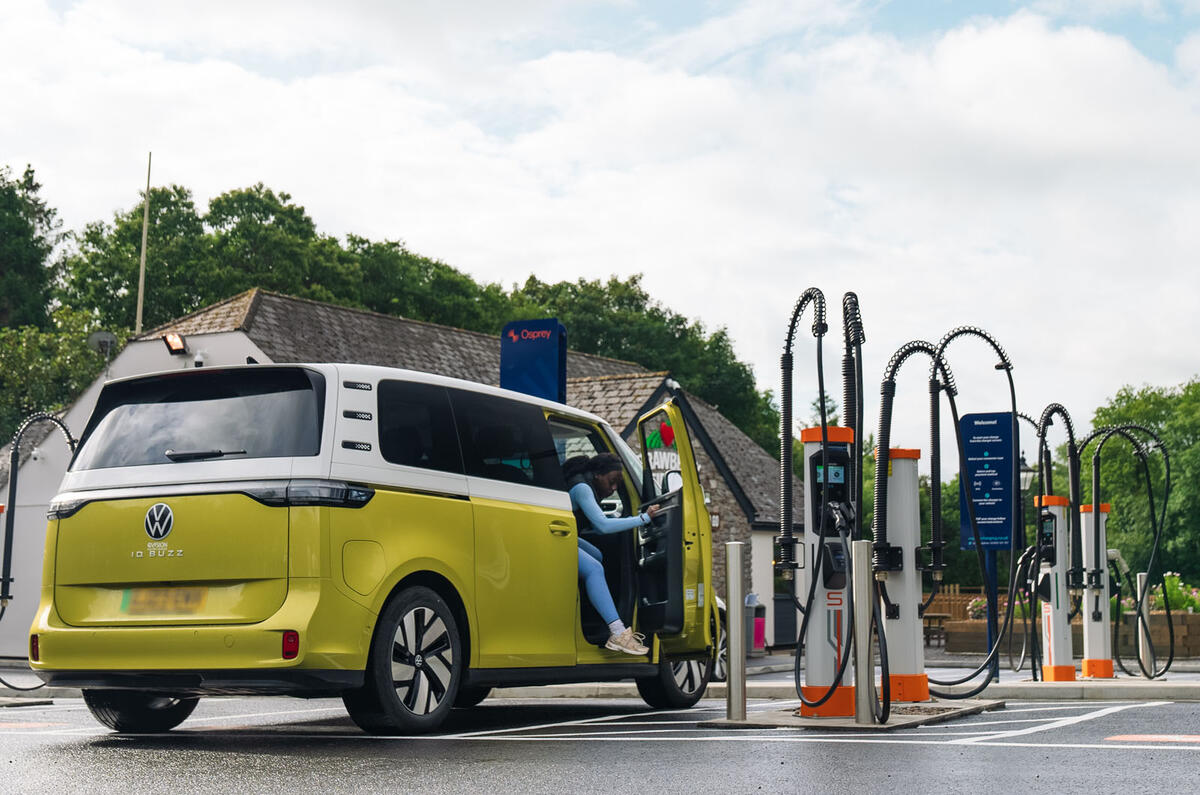The growth of the UK’s EV charging network could be stunted by significant and unexpected cost hikes that mean many charging hubs aren’t currently turning a profit.
Ian Johnston, CEO of charger operator Osprey, told Autocar that “we are nowhere near profitability” because of skyrocketing electric grid costs.
Dora Clarke, Osprey’s head of external affairs, said the standing charge paid by the company for a “typical” hub in the Midlands with eight chargers has increased over the past three years from £99 per year to more than £8600. Osprey operates 56 such hubs nationally.
Osprey is not alone in facing this problem. According to a new report published by EV charging body ChargeUK, standing fees have increased by 462% for rapid-charging hubs (those whose chargers put out 50kW or more) and 389% for slow-charging hubs (sub-50kW) over the past two years.
ChargeUK attributed the hike in fees to energy regulator Ofgem’s Targeted Charging Review, which means businesses now have to pay for the capacity of the energy they could use, rather than what they actually draw. As a result, charging companies are “penalised” for building new hubs that are rarely used to their full extent, said ChargeUK.
Clarke said: “Where those costs – and especially grid costs – have jumped, it then makes that site loss-making. You’re not making any money unless that site suddenly goes off the charts in terms of utilisation [by customers]. For an average to good utilisation, the cost just pushes it into loss-making.
“On the network level, with lots of different hubs in different regions with different utilisations, the challenge is ensuring you’re not ending up with too many of these hubs that are just loss-making.”
Johnston added: “The big picture is we and our peers have been doing this for seven or eight years now, we’ve invested hundreds of millions and we are nowhere near profitability.
We were meant to be, but the cost profile of running a network has changed so much because of these grid charges.
“The problem is you can’t keep burning £100 million a year building a new site if you have no prospect of getting to profitability – if those sites aren’t actually covering their own cost.
“That’s the bit we’re trying to get the government to understand: if we want to see this infrastructure keep coming, you’ve got to show a pathway to profitability, which these costs are preventing at the moment.”








Join the debate
Add your comment
Yeah doesn't sound great does it?, and with the recent storm,what if your power goes out for a few days, where can you charge your car?
.. ever tried getting petrol from a petrol station that has no electricity?
To cut a long story short, I have a PHEV on order and when away from home, it's not worth using any public charger who's rate exceeds 40p/kwh.
The question is, if they halfed the price of public chargers, would they more than double the number of people who use them? I reckon they would. They need more people to use them.